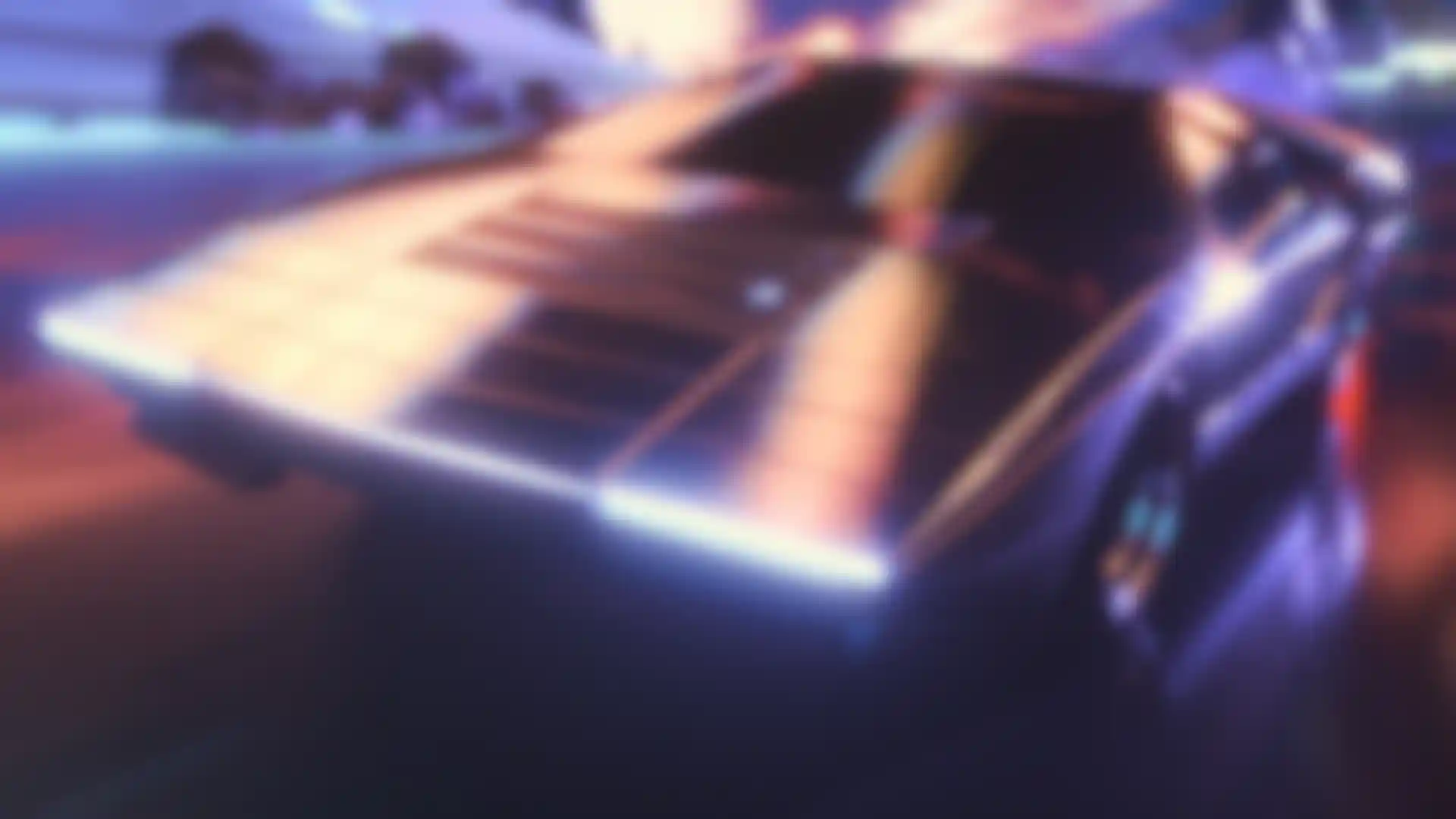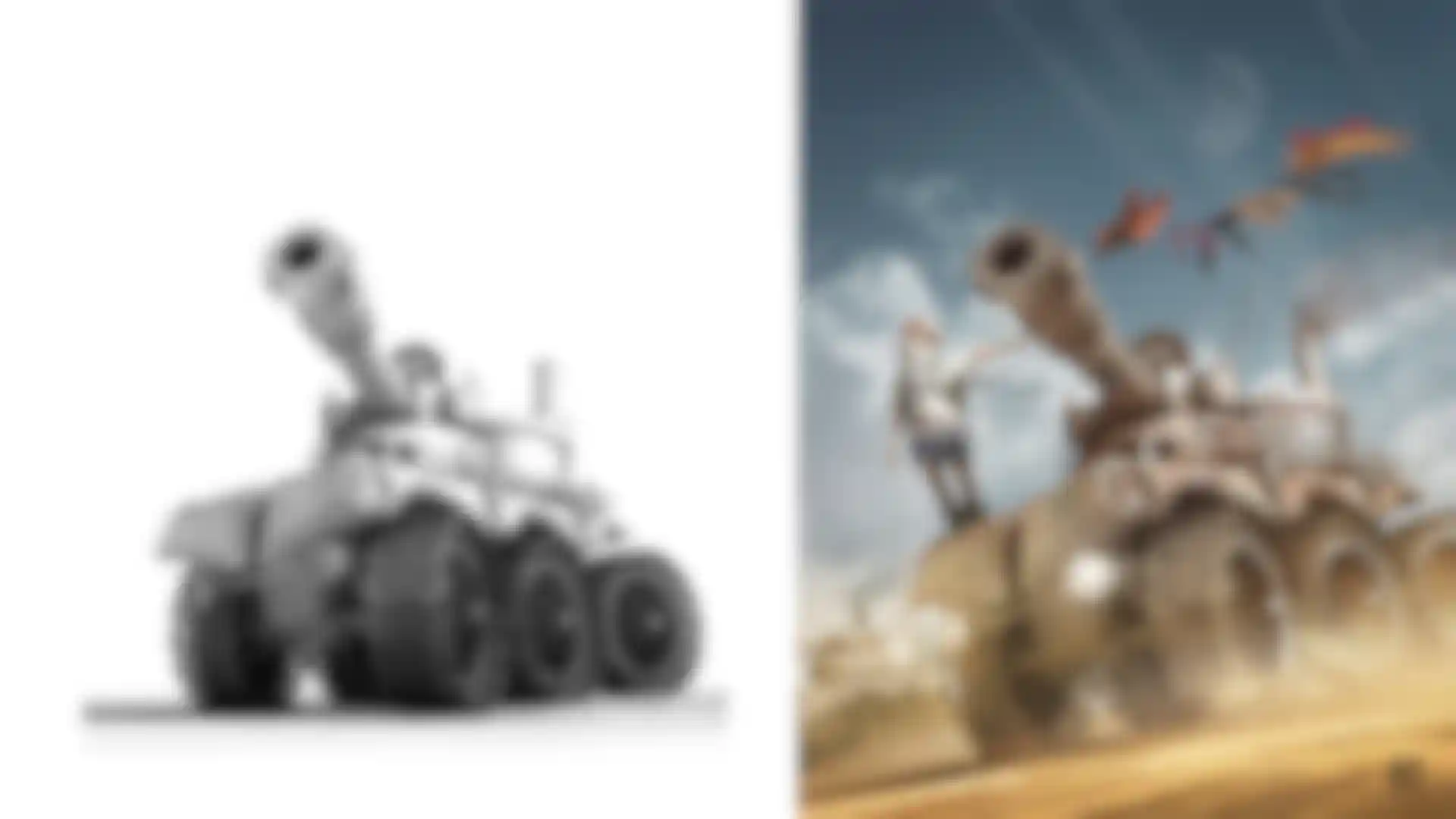
Riding the Retrowave Florian Renner speaks about projects that began as fun and then spread like wildfire online.
In his work, Munich, Germany-based 3D artist and graphic designer Florian Renner combines unique design with retro-futuristic esthetics that have engrained themselves in today’s pop culture. The cult status of the 1980s not only plays a major visual role in the Netflix hit Stranger Things and games such as Cyberpunk 2077 but its synth-wave music also has a huge online fan base.
We discussed Florian’s 80s-inspired projects with him as well as his custom toolset for generating urban scenery and graphics in Cinema 4D.
Please tell us more about the types of projects you work on.
Florian Renner: My work can differ between commissioned and non-commissioned work. Commissioned work includes things like trade show work for agencies and architectural visualizations, stage graphics and storyboards. My non-commissioned work is work that I do purely for myself, simply because I think it’s cool. This includes animations with the 80s Retrowave theme where music also plays a major role and has an enormous effect on the result. My non-commissioned work draws the attention of a lot of clients who end up wanting to work with me.
Give us some insights into your professional development.
Florian Renner: As a graphic artist and illustrator I actually come from the world of graphic design and wanted to work as a freelancer in 2007. Back then I worked for an agency with clients such as Audi, for whom I designed trade show booths, for example, but I wanted to work on different, more diverse projects. I learned how to use Cinema 4D so I could enhance my illustrations. I loved working with Cinema 4D so I continued to hone my 3D skills. There were also far fewer 3D artists than there were 2D graphic designers, which generated a high demand for my skills in the field of 3D. I was always fascinated by the combination of graphic design and 3D or illustration and 3D. A lot of applications bowl you over with their complexity but Cinema 4D was user-friendly from the start and lets you quickly achieve really nice results. That impressed me.
For my first 3D projects I built the objects in Cinema 4D and then did an overpainting in Photoshop since I wasn’t familiar with texturing in Cinema 4D, yet.

That was around 2008. Back then I wasn’t happy with the quality of pure 3D images but this didn’t stop me from wanting to completely create my images in 3D. Nowadays you can’t tell the difference between good 3D renderings and 2D illustrations, which is why my work contains a lot more 3D now. I worked for agencies for a while until I switched to freelancing in 2011.
Your retro-style animations have been viewed millions of times on YouTube and you’ve worked quite a bit with Synthwave musicians. Can you tell us more about your Retrowave project?
Florian Renner: The Retrowave video was basically created because I wanted to test the TurbulenceFD plug-in for Cinema 4D. I wanted to have a car drive from point A to point B through fog generated by TurbulenceFD. I used a 3D model of the DeLorean, which is available for free online, and started to experiment with the effect. At this time I was really inspired by the visuals of a lot of 80s-style intros as well as the Tron movie from 2010, which is probably quite obvious. I generated a lot of fake reflections on the car in Cinema 4D and made the surfaces so “clean” in order to optimize render time as much as possible. In combination with a few color corrections, motion blur and glow in After Effects, the visuals ended up looking pretty cool.
I created the city through which the car drives was using the Greyscalegorilly City Kit. I used the Ambien Occlusion shadow in the Luminance channel to make the edges of the buildings light up. The wireframe-look for the buildings and the car was created using the Atom Array in Cinema 4D.
I think this project simply had the right look at the right time, which is not what I expected. Originally, I wasn’t even sure if I should publish the Retrowave project. I uploaded it to my YouTube channel early in 2015 and a few days later I provided it to the NewRetroWave YouTube channel – and it’s been viewed millions of times since. I still get one or two inquiries per month from people interested in licensing the video for all sorts of uses that have anything to do with the 80s.
Two years after Retrowave you produced an animation in a similar style for the NewRetroWave label named Magnatron 2.0. How did you develop your work further for this project?
Florian Renner: My love for minimalistic design, graphic shapes and futuristic-looking computer displays is reflected in Magnatron 2.0. I was able to create a much finer look for the city using the Random Building Generator that I had developed. The city is much more detailed and just about every aspect of this project required more work. It was important to me to create more different scenery in Magnatron 2.0 and to have a type of storyline or dramaturgical effect in this video. This is why the car “awakes” the city in a way and its headlights turn on as it enters the city.
I used Worldmachine, a terrain generation software, to create the landscape at the beginning of the video and the C4D Drive plug-in to create the car’s realistic physics behavior. In Retrowave, the car was simply driving in a straight line but with C4D Drive, it also takes into consideration the surface on which it’s driving, which let the car drift a little in curves and the suspension was simulated.
The 80s theme with neon colors and synthwave music can be seen a lot in your work. Where does your fascination for this style come from?
Florian Renner: Although I don’t want to overdo a good thing with the 80s theme, it seems to permeate my work to a certain degree. I love clean design with graphical shapes, clear lines and reduced interfaces, and this works well with the 80s theme. I like to put a new shine on classic elements in retro-futuristic design and keeping certain design elements to keep that special charm of the original element. This can be seen in my personal projects in which I tried to give the C64 and Gameboy an up-to-date design. This project has generated several inquiries for product visualizations from customers such as Huawei and other inquiries from agencies and production studios like Sehsucht.
At your website you offer generator tools that you created yourself for generating city scenery. Tell us more.
Florian Renner: I’ve had a lot of jobs for visualizing urban scenes, e.g., for trade show booths for companies such as Siemens. I had the idea that it would be very helpful if buildings could automatically be generated in Cinema 4D in order to speed up my workflow. This is why I developed the Random Building Generator for Cinema 4D using XPresso.
With this tool, a building’s basic shape as well as its width and height can be defined via a black-and-white image. Since this tool works parametrically, I was able to work very flexibly and quickly generate random cityscapes.
The only problem was that the facades of the generated buildings were completely made up of geometry. Each window was made up of individual polygons and the higher the building was, the more polygons that had to be created. This lead to the scene having too many polygons and at some point being very memory intensive. This meant that the tool was not suited for generating large cityscapes.
This problem was solved by my new tool, CityRig, which generated the facades using textures instead of polygons. Now, large cityscapes can also be created through which you can navigate in the Viewport without bogging your computer down. Another advantage is that you only have to exchange textures in order to have a completely new façade. You can simply replace the individual textures of the doors, windows, roofs or billboards. You can also edit the textures and displacement maps on Photoshop. With CityRig only takes a few minutes to generate a huge cityscape.
While working with CityRig I was looking for a way to design roofs using displacement maps, which lead to the development of yet another tool: Mantis. Mantis uses a MoGraph/XPresso script to generate geometric patterns and animate these to the rhythm of music. The color of elements can also be animated and lit to music. This is ideal for designing VJ loops and music videos as well as interface design. Generally speaking, the procedural generation of graphics is an important part of my work and I want to work with randomly generated music videos in the future.



